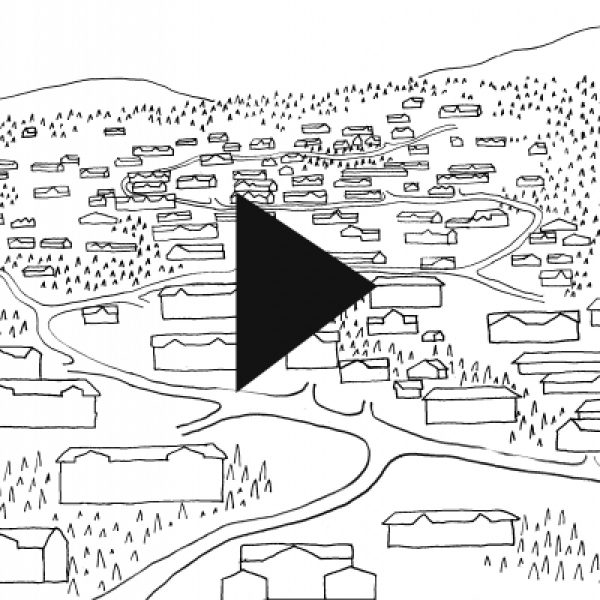“HYTTEFEBER” Exhibition

"HYTTEFEBER" is an exhibition about cabin culture for the Finnish-Norwegian Culture Institute, FINNO, located in Oslo Norway.
We are obsessed with cabins: Norway has 1.5 million households and nearly 440 000 cabins and holiday homes. More than half of the population have access to a cabin. While houses and apartments are becoming smaller, the size of the average cabin is getting bigger. The battle for space in the mountains and along the shoreline is heating up and diluting the myth of the Norwegians preferring solitude and simplicity.
The exhibition examines our notions about the ideal cottage. Where are the ideals from? Do we have the same dreams? What kind of experiences are we looking for in the cabin?
Are you one of those who prefer the view from a modest, little cabin 30 km away from the nearest neighbor and driveable road, or would you rather enjoy the comfort of induction stove and wireless internet in the middle of a bustling cabin village? Has the romantic notion of the cabin drowned in the noise from the SMS-operated heat pump and the roar from the 35 degree hot bubble bath on the terrace, or has the cabin simply evolved in pace with rest of our society?
A substantial part of the built area in Norway is occupied by leisure cabins. The combined footprint of compounds measuring 50 cabins or more, constitute an area of 200 km2. This equals approx. one tenth of the urban areas in Norway. This development has a large impact on the local economy and the way we experience nature in the districts. Needless to say it is crucial that this development is overseen with equal knowledge, engagement and discussion as urban planning in cities.
As Jørgensen and Alasuutari writes, spending time at your cabin or cottage represents a shift away from everyday life, making it possible to explore other things and engage in other activities. This is the main reason why we seek this “other place”, which traditionally is a bit smaller, a bit more austere and located in a different environment than our home. In our increased desire for more comfort and luxury the difference between home and cottage is starting to diminish. In terms of square meters and living standards the buildings in suburban dwelling areas and cottage areas are getting increasingly similar. The only difference is the time we spend there.
Earlier, in the 60ties, when old farmhold cottages were converted into cabins for leisure, it made sense to adapt the new cabin additions to the local context. These days, large, autonomous areas of cottages are built in areas of previously untouched wilderness, in this context it is hard to see the reason for any kind of stylistic restrictions. When paying a visit to these new, large developments of cabins, it is striking to see how stylistically similar they are. Is it really the case that everybody, building a cabin in the mountains these days, wants an anachronistic house resembling the manor of a viking king?
It might be perceived as mixed signals as we are encouraged to save energy in our daily life activities at work and at home as the largest growing building typology; leisure cabins, are given little or no restrictions. Traditionally, the cabin was a place of modesty, where the lack of water, electricity and other technical facilities naturally led to an existence of low energy consumption. Today the size, the number of gadgets and thus the energy use of the cabins have dwarfed that of the home. In planning of leisure cabins we need to a larger extent to put stronger restrictions on energy consumption and demand for sustainable solutions. The cabin can no longer be a free zone from such mundane global worries.
The topic on cabins is wide. The invited writers raised a number of relevant topics in their articles; -questions on national identity, local economy, individuality, architecture, taste, sustainability and living standard. The exhibition aims to invite to a broader discussion on what kind of life we want to lead in our holiday home and what kind of values we would like to pursue when planning the cabin and it's surroundings.
- team:
- Dagfinn Sagen, Helge Lunder, Minna Riska
- category:
- exhibition









